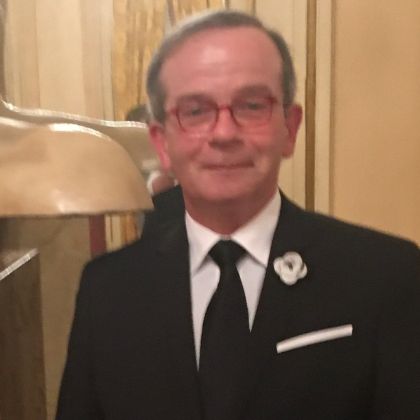From a purely chronological standpoint, the original, 1750 version of Gluck’s Ezio is a pre-reform opera. A performance as carefully curated and persuasive as Odyssey Opera’s, however, proves how deceptive chronological classifications can be. Despite the formulaic procession of recitatives and da capo arias, the music serves the drama precisely in the way outlined in the 1769 preface to Alceste, “without chilling it with useless and superfluous ornamentation”.
Thanks to director Joshua Major, conductor Gil Rose, and an accomplished cast, vocal pyrotechnics are wed to the dramatic situation banishing the static and mechanical from a genre all too prone to both. Repeats and their ornamentation are never perfunctory. At times, they sharpen and deepen an emotion or compound the tension between the private and the public; between love, jealousy, or revenge and duty and honor. At others, they serve to take the listener – both onstage and in the audience – by the lapels, as if to say, “Don’t underestimate me or downplay what I said before. I mean business!”
As Gluck’s music served the poetry, so the production served the drama. Joshua Major’s staging respected the inherently vocal nature of opera seria, keeping movement and gestures to a motivated minimum. Characters’ movements were tied to changes in the emotional import of the music; gestures were restrained and to the point. He allowed the conflicting loyalties and emotional entanglements of Metastasio’s prolix plot to sing for themselves.
Costumes and sets were similarly uncomplicated and restrained. Jiang Jung’s unit set of dark-colored moveable panels, square columns, and cubes shifted easily to confect abstract public and private spaces within and between acts. Rachel Padula Shufelts mixed the Roman – women gowned in pastels styled after the traditional stola and limbus, Valentiniano in full imperial purple and crowned with a gold laurel wreath – and the 19th century with Ezio and Varo in grey, double-breasted military frock coats accented with sashes or cinctures, blousey pants tucked into high, laced boots and the scheming patrician, Massimo, clad all in vaguely Victorian black.
Gluck cast castrati in the roles of Valentiniano and Ezio. Gil Rose chose countertenor Randal Scotting for the first and mezzo Brenda Patterson for the second. Scotting towered over his fellow castmates as befits an emperor. Initially tentative and a bit rough, Scotting’s distinctive timbre and limpid, pliant voice stood him apart as well, once he warmed up. Though Ezio is the title character, he gets short shrift from both Gluck and Metastasio. Fulvia and Massimo have all the best music and dramatically he rarely acts, more often being acted on. Brenda Patterson, assertive and convincingly masculine, made the most of this low-lying part.
Massimo is determined to exact revenge on the emperor for the attempted seduction of his wife, not hesitating to sacrifice his daughter, Fulvia, or Ezio as pawns to that end. Iago-like he sets the plot in motion, taking the lead role while deftly directing his players. Yet he is plagued with doubts and reservations about the consequences of his actions. Diamond sharp diction, elegant, accurate singing, and sensitive phrasing allowed William Hite to meet every vocal and dramatic challenge, most prominently in Act I’s lyrical “Se povero il ruscello” (later recycled as Orfeo’s “Che puro ciel”) which began as an innocent pastoral then morphed into a venomous, insinuating whisper in its repeat.
Fulvia’s arias are the most elaborate, emotionally varied, and musically taxing of any character. It is not an easy sing, but it certainly seemed so with Jennifer Holloway in the role. Pinpoint precision in passagework and total immersion in her character transformed every aria into a revelatory emotional odyssey. Fulvia’s final aria, delivered on a darkened stage save for a shaft of light illuminating her, alone downstage right almost at the lip, was mesmerizing.
Soprano Erica Petrocelli sang Onoria, Valentiniano’s sister. Though still a student at the New England Conservatory, she made an impression with her unusual but alluring timbre and robust singing. It will be interesting to see how the promise shown here is fulfilled. Jesse Darden’s Varo was equally capable. Gil Rose, leading an orchestra of modern instruments, favored brisk tempi but his reading was detailed and lithe as well as lively, always supporting his singers.
Metastasio was of two minds about Gluck. On the one hand he admired his “surprising fire” on the other he thought him completely “mad”. Yet, of the more than 36 settings of his libretto, including one by Handel, it is Gluck’s which endures. Thanks to Odyssey Opera, we who saw their Ezio now know why.


